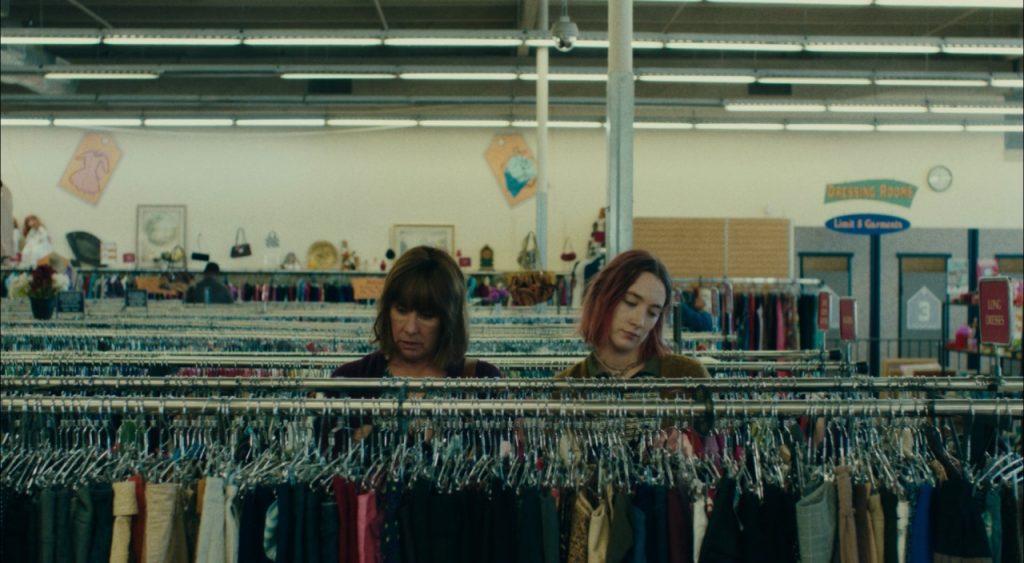
Greta Gerwig’s directorial debut, Lady Bird (2017), is the “hip” ticket this holiday season. Like Wonder Woman (2017) in the spring, Lady Bird suits the zeitgeist; though in many respects this clouds rather than illuminates a lot of the serious discussions I have heard about the film. Still, as far as debut films go, Lady Bird is effectively entertaining and will, no doubt, touch upon the specific cultural references and experiences of most millennials.
Lady Bird’s two main achievements are its narrative and its defying of convention. Most films, directed by men or women, that deal with a woman’s “coming-of-age” center around two conventions that are subverted in Gerwig’s film. First, the notion that the primary objective of any teenage girl is to get a cool teenage boy to like her. Second, that the only way to attract a suitor is by “fitting-in” with the popular clique. Lady Bird does address certain maneuverings to be popular as much as it addresses the maneuverings of it’s title character to get a boy, but with a focus not on the end goal, but rather on the subtle ramifications of these endeavors. In fact, Lady Bird (Saoirse Ronan) herself doesn’t calculate or even manipulate those around her all that consciously, and certainly does so with a blind eye as to how her actions affect the people closest to her. Gerwig’s prioritizing of these two processes within the narrative focus negates what often seems like obsessive and borderline violent behavior in the protagonists of other films centered on the experiences of teenage girls (consider the teen films of John Hughes and that ilk).
The focus on process also enables Gerwig to sustain the narrative thread concerning the titular character and her mother (Laurie Metcalf), along with several other characters and subplots. It could be said that Lady Bird, as much as it is a character study, is a film that actually allows the players to develop characters, yielding some effective and surprising performances to the point that it sometimes appears to be an ensemble film. The issue then is that Gerwig, though an actor herself, does not frame or cut Lady Bird based upon the strengths of these performances.
Gerwig’s camera placement favors a medium to wide two-shot, locking characters together in one frame. This would not seem as theatrical as it does if the blocking or the depth of focus were at all interested in the spaces inhabited by these characters. When Gerwig does use close-ups it is almost always after a conflict when the stakes are settled and we feel secure in the knowledge of where we should be investing our sympathies as spectators. Similarly, Gerwig’s approach to editing is to cut to the action of a scene or sequence. We the audience are never given the chance to stay in a scene after the narrative action has occurred and are never allowed to witness or share in the tension of the characters within a moment.
These issues of technique culminate to the effect that Lady Bird forgoes much of its potential for dramatic urgency. Lady Bird is a “safe” film, a commercial film, that refuses to take any real substantial risks.
This review was first published in 2017.
